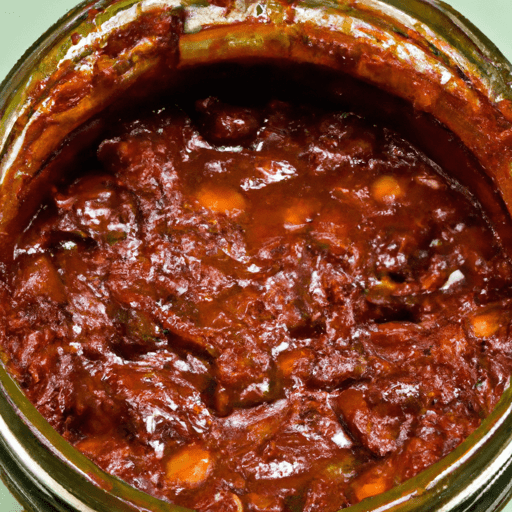The Smoky and Versatile Charm of Canned Chipotle
If you’ve ever ventured into the depths of the condiment aisle, you may have stumbled upon a small, innocuous-looking can labeled “chipotle.” But make no mistake, dear reader, this tiny can holds a culinary secret that has the power to transform your dishes. Today, we dive into the world of canned chipotle, exploring its distinctive taste, common uses in cooking, nutritional value, and uncovering some captivating history and facts along the way.
The Taste of Canned Chipotle
Canned chipotle peppers are the ultimate embodiment of smoky and fiery flavor, packed into a single chili pepper. These little powerhouses are made from ripe jalapeno peppers that have been smoked and dried, resulting in a mesmerizing combination of heat and smokiness. The complexity of their flavor profile is further enhanced by their uniquely sweet and tangy undertones.
Common Uses in Cooking
Canned chipotle peppers offer endless possibilities in the kitchen, adding depth and intensity to a wide array of dishes. Here are a few popular ways to incorporate them into your culinary adventures:
Adobo Sauce: The chipotle peppers are often canned in adobo sauce, a blend of tomatoes, vinegar, garlic, onions, and various spices. This rich and smoky sauce serves as the perfect marinade or glaze for meat, poultry, and even grilled vegetables.
Sauces and Salsas: Pureeing canned chipotle peppers with other ingredients like tomatoes, lime juice, and cilantro gives birth to vibrant and flavorful sauces and salsas. Drizzle it over tacos, enchiladas, or use it as a dip for tortilla chips.
Soups and Stews: Adding a few chopped chipotle peppers or spoonfuls of adobo sauce to soups and stews infuses them with a smoky and slightly spicy kick. Whether it’s a comforting chili, a rich tomato soup, or a hearty black bean stew, canned chipotle elevates the flavors to new heights.
Marinades and Rubs: Blend canned chipotle with olive oil, herbs, spices, and a touch of citrus juice for an unforgettable marinade or rub. It works wonders with grilled chicken, shrimp, pork, or even tofu.
Nutritional Value
While canned chipotle peppers are primarily used to enhance flavor, they also pack a punch when it comes to nutritional value. Here’s a glimpse into what you can expect from these smoky wonders:
Vitamins and Minerals: Chipotle peppers are a good source of vitamins A and C, which contribute to a healthy immune system and support cell growth. They also contain potassium and iron, among other essential minerals.
Capsaicin: The fiery compound responsible for chipotle’s heat is capsaicin. It boasts numerous health benefits, including potential pain relief, improved digestion, and boosting metabolism.
Low in Calories: Canned chipotle peppers are relatively low in calories, making them a guilt-free addition to your meals. Just be mindful of the other ingredients you pair them with!
An Interesting History and Facts
The journey of chipotle peppers began centuries ago. The making of canned chipotle, however, originated in Mexico during the Aztec period. The Aztecs recognized the unique smoky flavor achieved through smoking and drying jalapenos, and eventually, this practice spread throughout the country and beyond.
Did you know that the word “chipotle” is derived from the Nahuatl language spoken by the Aztecs? It combines the words “chil” (meaning chili pepper) and “poctli” (meaning smoke). This linguistic fusion perfectly describes the essence of these peppers.
Fun Fact: Chipotle peppers are often confused with smoked jalapenos, also known as “morita.” While they share similar characteristics, morita peppers are typically smaller and hotter than chipotle.
Wrap Up
The unassuming canned chipotle holds the power to transform ordinary dishes into extraordinary culinary experiences. With its smoky, spicy, and slightly sweet flavor profile, it has the versatility to enhance a wide variety of dishes. So, next time you spot that unassuming can on the shelf, grab it, and let your taste buds embark on a delightful adventure!
Canned Chipotle
Origin: Chipotle peppers originated in Mexico. They are smoke-dried jalapeño peppers. The drying process gives them a distinct smoky flavor and deepens their red color.
Common Uses: Canned chipotle peppers are commonly used in Mexican and Tex-Mex cuisine. They are versatile and add a smoky, spicy flavor to a variety of dishes. They are often used in sauces, salsas, marinades, and stews. They can also be blended into dressings, mayonnaise, or other condiments to add a smoky kick.
Nutritional Benefits: Canned chipotle peppers are low in calories but rich in flavor. They contain essential nutrients such as vitamins A and C. They also provide capsaicin, which is the compound responsible for the spicy heat. Capsaicin has been associated with potential health benefits, such as pain relief, increased metabolism, and improved cardiovascular health.
Unique Properties: The smoking and drying process of chipotle peppers not only adds flavor but also helps to preserve them for an extended period. Canning chipotle peppers in adobo sauce, which is a tangy and slightly sweet sauce made from tomatoes and spices, enhances their flavor and allows for easy storage and longer shelf life.
Historical Significance: Chipotle peppers have a long history in Mexican cuisine. The Aztecs and Mayans used smoke-drying methods to preserve and enhance the flavor of peppers. The word “chipotle” comes from the Nahuatl word “chilpoctli,” which means “smoked chili.” Chipotle peppers have gained popularity worldwide and have become an important ingredient in many dishes beyond Mexican cuisine.




Use the share button below if you liked it.
It makes me smile, when I see it.